Five of the best electric motorboats
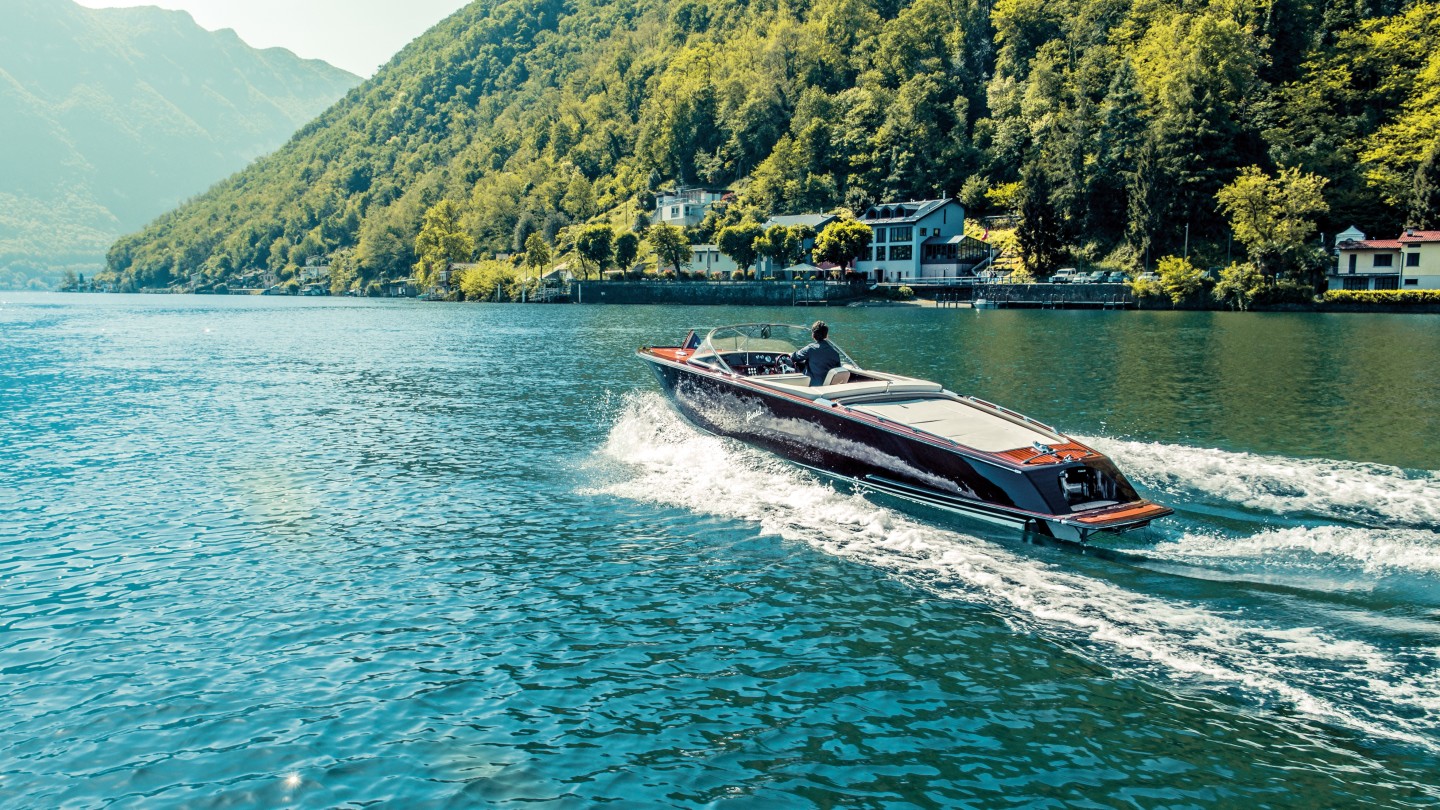
Roula Khalaf, Editor of the FT, selects her favourite stories in this weekly newsletter.
While electricity is on the march in the car industry, firmly stating its case to replace the combustion engine, plug-in power is yet to make a significant impact on the high seas. Like EVs faced in the early days, a lack of charging infrastructure coupled with the comparatively lower cruising speeds required to conserve energy have slowed the rate of adoption for electric boats – not to mention range anxiety, which takes on a whole new meaning when you’re out at sea with a low battery and 50 nautical miles (57 miles) from the nearest charge point.
But despite the slow start, the tide is turning. The smooth and almost silent electric powertrains that are increasingly working their way into motorboats open up a new, cleaner dimension to life on the water. With electric-car players such as Polestar wading in to power Swedish electric boat maker Candela and all-new companies coming to the fore, there’s a host of options to consider when contemplating a new craft.
X Shore 1
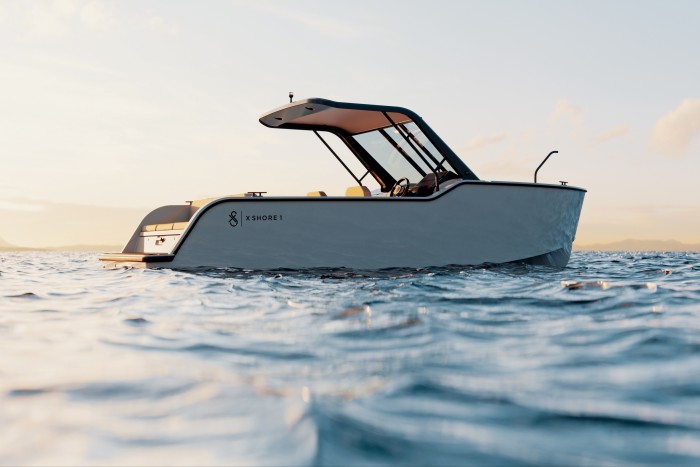
Competitively priced from €99,000, X Shore’s 1 is one of the most affordable options in the world of electric boats. “We must make electric boating competitive with fossil-fuel boats to speed up the transition,” says Jenny Keisu, CEO of X Shore. Founded in 2016, the Scandinavian company hopes to attract a new generation of boat owners by offering fossil fuel-free motorboats at an affordable price.
With a modern, minimalist hull design, the X Shore 1 is powered by an electric set-up that produces 125kW, taking the craft to a top speed of 30 knots (34mph) and a 20-knot (23mph) cruising speed. Range is 50 nautical miles (57 miles), albeit at low speeds, and the boat can be charged up from 20 to 80 per cent in 90 minutes when hooked up to a 22kW charger, or just 50 minutes on a fast 45kW charger. Measuring in at 6.5m, the X Shore 1 weighs less than two tonnes in either open- or closed-top configuration.
Candela C-8
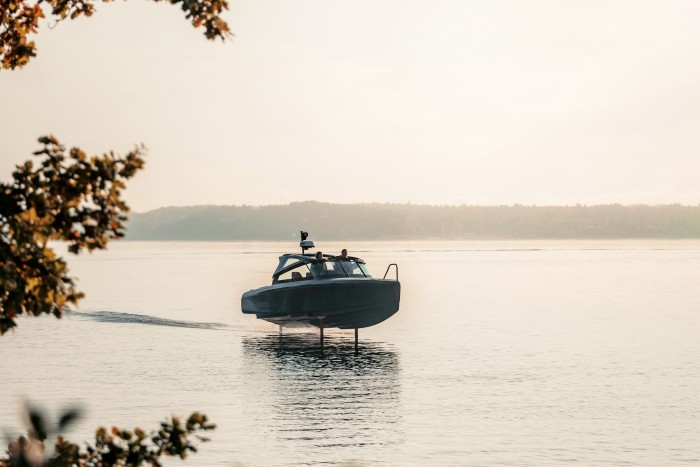
Setting itself apart from the competition with foiling craft that “fly” above the water, innovative Swedish boat builder Candela is on a mission to prove electric boating can be both fast and fun. Launched in 2022, the C-8 has since the start of this year been powered by a 69kWh powerpack made by Swedish electric-transport specialist Polestar.
Measuring 8.5m and costing €330,000, the C-8 has a top speed of 30 knots (34mph) and a range of 57 nautical miles (65 miles), confirming its right to the title of the longest-range electric boat on the market. And thanks to the reduction in water friction when foiling, the C-8 uses 80 per cent less energy than conventional boats of the same size. With room to sleep two adults and two children, the C-8 is a family-friendly cruiser and the first craft to offer DC charging – the same as Polestar’s popular model 2. It’s available as an open top, a T-top or a hardtop cruiser. A limited “Polestar edition”, in Polestar’s signature light grey, with upholstery based on its car seats, and gold-painted hydrofoils (from €400,000) has just been released.
Say Carbon Yachts 29 E
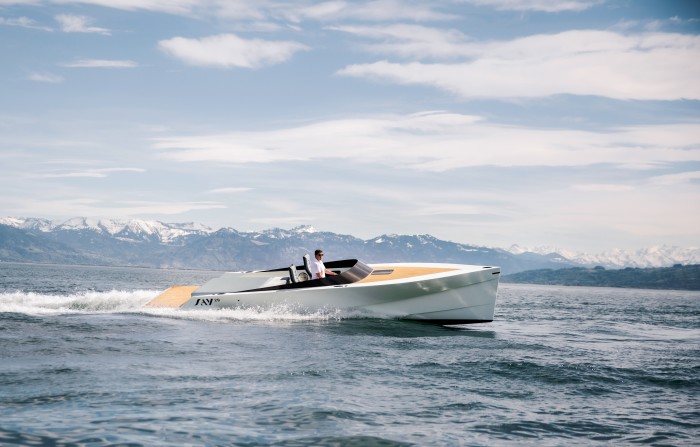
The electric version of the 29 from German boat builder Say Carbon, best-known for lightweight, ultra-fast sport boats, puts speed and style to the fore. Constructed from carbon fibre, the 29 E is powered by a 360kW Kreisel electric motor and a 126kWh battery, while weighing in at just 1.38 tonnes.
Self-proclaimed as the world’s fastest electric boat under 33ft, with a top speed of 45 knots (52mph), range is sacrificed in favour of speed, but the 29 E has a range of 25 nautical miles (29 miles) at 22 knots (25mph). With a price tag of $520,000, the 29 is far from the most cost-effective or economical means of getting about on the water, but will appeal to those looking to push the performance envelope.
Boesch 750 Portofino De Luxe
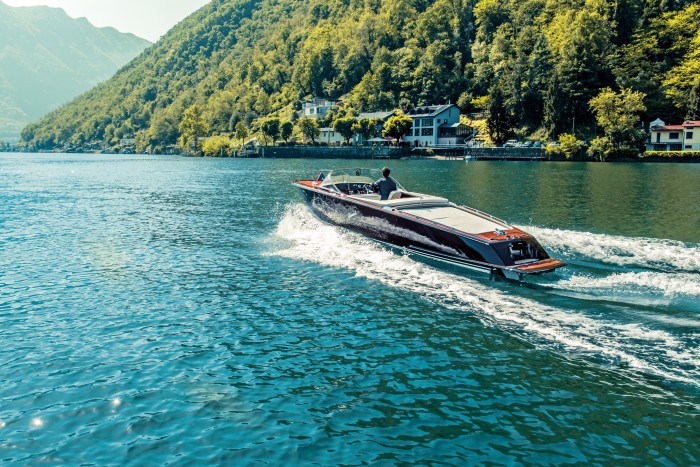
With an aesthetic to rival the timeless elegance of a Riva, Swiss maker Boesch – established in 1910 – still makes its boats exclusively out of wood using a lightweight mahogany-laminate construction. Harking back to the golden age of travel, the 750 Portofino sports a spacious sunpad aft, a retractable soft-top, and an automotive-inspired windshield.
Aside from its twin 50kW Piktronik motors, which give a top speed of 24 knots (28mph) and a range of 14 nautical miles (16 miles), the Boesch is built much like a combustion-engined craft with a traditional mid-mounted powerplant, a straight-shaft propeller and rudder steering. At 7.5m, the 750 can be used on lakes or seas and is well suited as a ski boat with its flat trim angle. With prices from €480,000, the Portofino’s elegance comes at a cost, particularly when considering its short range and run time.
Alfastreet Marine 28 Cabin
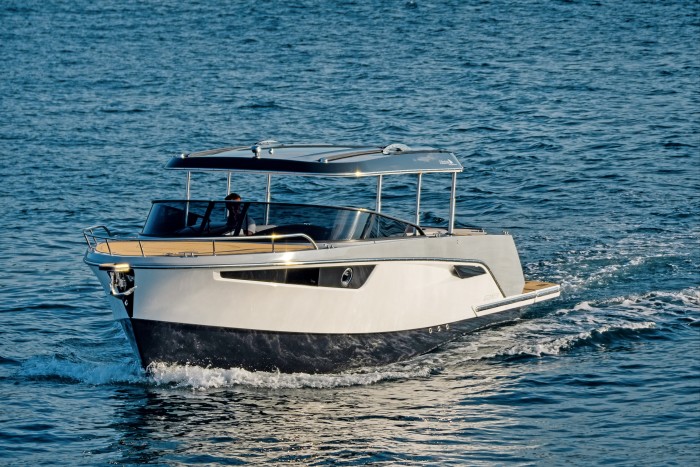
Slovenian-based boat builder Alfastreet Marine offers its 28 Cabin as a full-electric cruiser (from €165,900), alongside petrol- and diesel-powered options. Best-suited to slow-paced river cruising, the single or twin 10kW electric pod-drive motors give a maximum speed of eight knots (9mph) for around 10 hours, or 50 nautical miles (57 miles).
The 28 has a wider body that stays firmly in the water rather than rising up on hydrofoils. This leaves more space inside the front for a king-sized bed and a small bathroom, setting the 28 apart from many other day boats with its ability to host a couple on board, overnight.
On top, there’s seating for 12 with a lunch table and benches. With the option to specify a nifty hydraulic lifting roof, the 28’s party piece is its ability to seal itself from the elements at the push of a button, doing away with rain covers at the end of a day on the water.
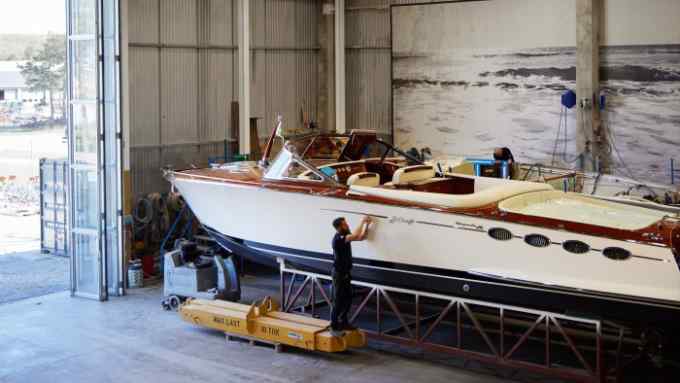
Comments